The Ram Mandir Ayodhya is not just a temple; it’s a symbol of faith, resilience, and cultural significance.
Its history is etched in the ancient soil of Ayodhya, whispered through the rustling leaves of the Sarayu River, and etched in the hearts of millions of devotees.
Table of Contents
The Rise of Ram Mandir Ayodhya
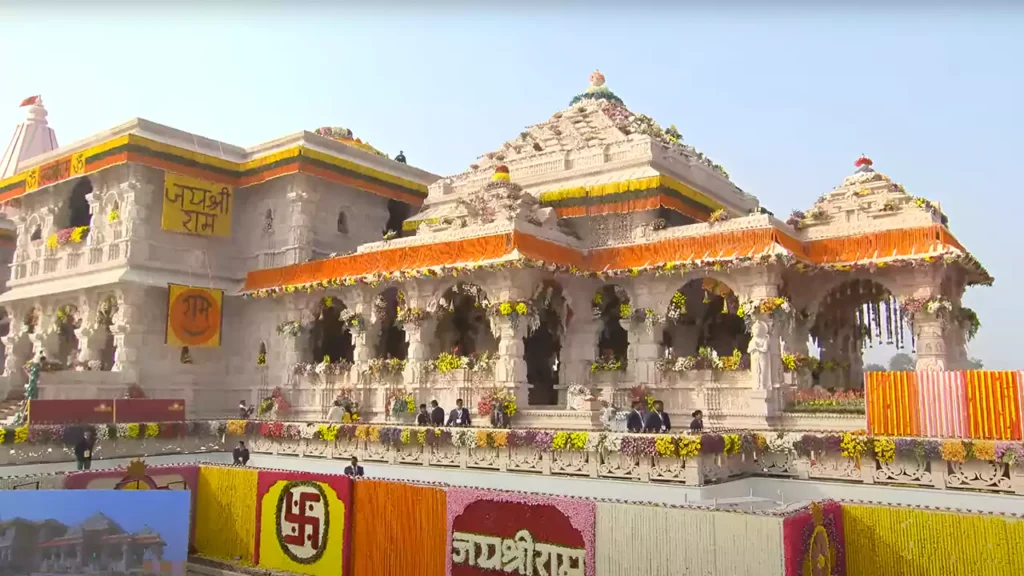
The Shri Ram Janmabhoomi Teerth Kshetra Trust, formed by the Indian government, oversees the construction of the Ram Mandir.
The temple is built in the grand Nagara style of architecture, characterized by its towering shikhara or spires.
Spread across 2.77 acres, the temple will be a magnificent tribute to Lord Rama, crafted from pink sandstone and adorned with intricate carvings.
Ram Mandir Ayodhya – A Beacon of Hope and Unity
The Ram Mandir is more than just a religious structure; it’s a symbol of hope and unity and home of Ram Lalla.
It represents the culmination of decades of devotion and perseverance, a testament to the enduring power of faith.
The temple will become a major pilgrimage center, attracting millions of devotees, fostering cultural exchange, and promoting religious harmony.
Why was January 22, 2024 chosen as pran-pratishtha?
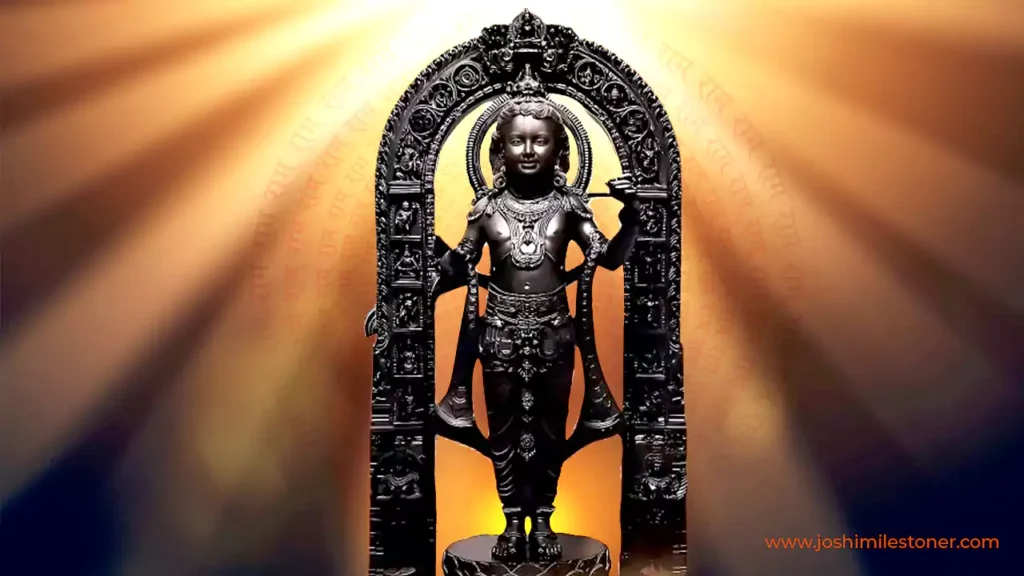
Astrological Reasons
Alignment of Muhurats and Nakshatras: According to Hindu astrology, several auspicious periods will align on January 22, making it an ideal time for significant rituals. These include:
- Abhijit Muhurat: This is considered highly auspicious for starting new ventures.
- Mrigashira Nakshatra: This nakshatra is associated with Lord Soma, the moon god, and symbolizes knowledge, experience, and success.
- Amrit Siddhi Yoga and Sarvartha Siddhi Yoga: These yogas bring success and fulfillment to any undertaking.
Karma Dwadashi Tithi: This sacred day dedicated to Lord Vishnu adds further auspiciousness to the occasion.
Panchang for January 22, 2024 for Ajodhya location
Auspicious Timings
| Brahma Muhurta | 05:04 AM to 05:57 AM | Pratah Sandhya | 05:31 AM to 06:50 AM |
| Abhijit | 11:51 AM to 12:34 PM | Vijaya Muhurta | 02:00 PM to 02:43 PM |
| Godhuli Muhurta | 05:32 PM to 05:59 PM | Sayahna Sandhya | 05:35 PM to 06:55 PM |
| Amrit Kalam | 07:46 PM to 09:26 PM | Nishita Muhurta | 11:46 PM to 12:39 AM, Jan 23 |
| Sarvartha Siddhi Yoga | 06:50AM to 04:58 AM, Jan 23 | Amrita Siddhi Yoga | 06:50 AM to 04:58 AM, Jan 23 |
| Ravi Yoga | 04:58, Jan 23 to 06:50 AM, Jan 23 |
Ram Mandir Ayodhya Latest Updates
Here you can get all information of Ram Mandir for more such information you can follow the official X account of Shri Ram Teerth Kshetra.
प्राण प्रतिष्ठा और संबंधित आयोजनों का विवरण:
— Shri Ram Janmbhoomi Teerth Kshetra (@ShriRamTeerth) January 15, 2024
1. आयोजन तिथि और स्थल: भगवान श्री रामलला की प्राण-प्रतिष्ठा योग का शुभ मुहूर्त, पौष शुक्ल कूर्म द्वादशी, विक्रम संवत 2080, यानी सोमवार, 22 जनवरी, 2024 को आ रहा है।
2. शास्त्रीय पद्धति और समारोह-पूर्व परंपराएं: सभी शास्त्रीय परंपराओं…
Where to watch the live screening of Pran-Pratishtha of Ram Lalla?
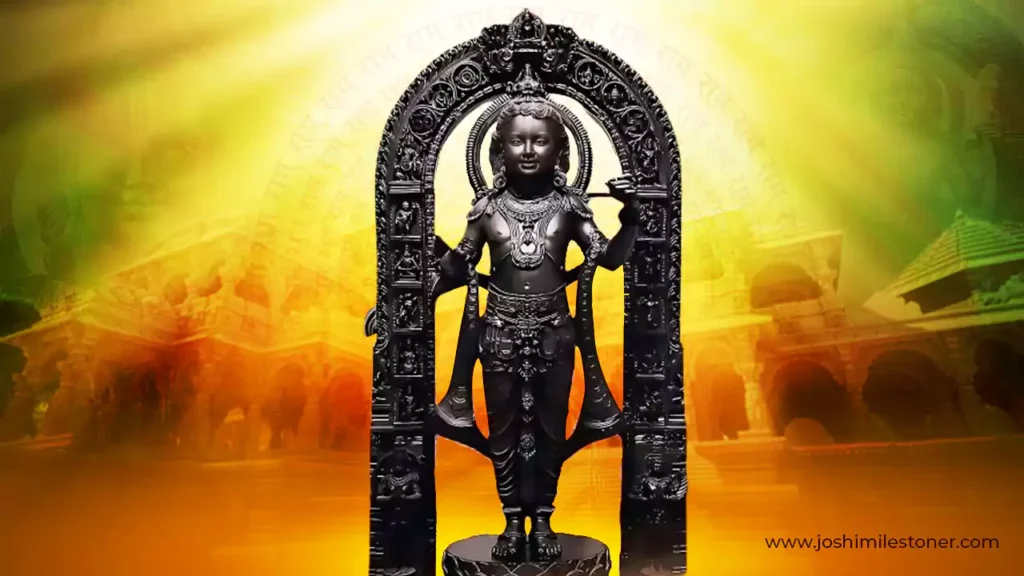
Live streaming of Pran-Pratishtha of Ram Lalla will happen across many TV channels, YouTube channels, and New York Times Square.
Go online and search for “Ayodhya Ram Mandir Pran-Pratishtha live” on any search engine on January 22, 2024.
Ayodhya Dham: Celebrating Lord Ram
About the Ram Mandir Ayodhya construction
- Main Contractor: Larsen & Toubro (L&T), a leading Indian engineering and construction company, is entrusted with the main construction of the temple.
- Construction Timeline: The journey began with a grand Bhoomi Poojan ceremony on August 5, 2020, marking the official commencement of civil construction. A section of the temple is set to be inaugurated in January 2024, with the grand pran-pratishtha (consecration) ceremony scheduled for January 22, 2024. The entire project is expected to be completed by December 2024.
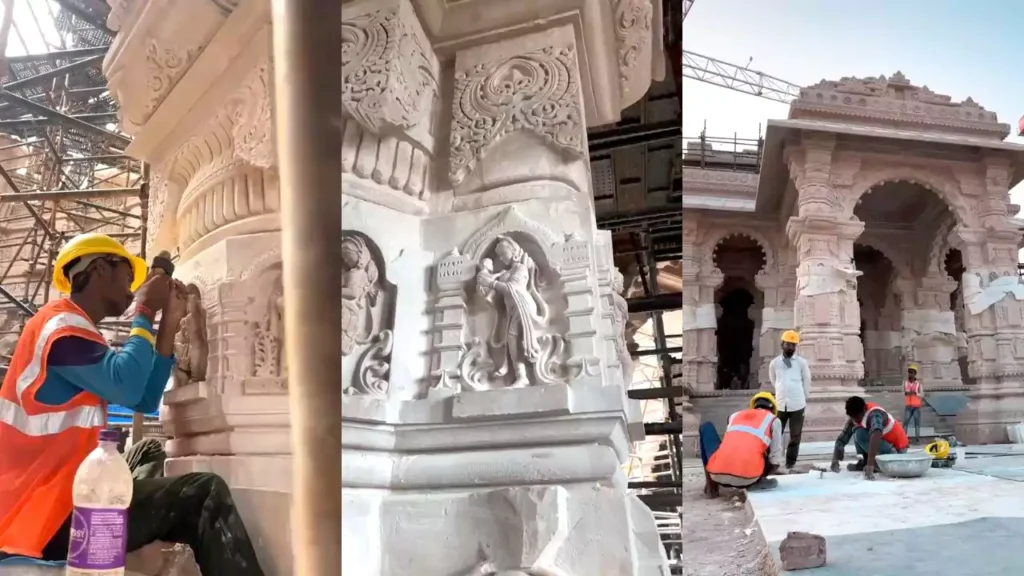
A Grandeur in Numbers
- Total Area: The temple complex sprawls across 2.7 acres, offering ample space for devotees and pilgrims.
- Built-Up Area: The temple boasts a built-up area of 57,400 sq.ft., providing ample space for prayer halls, sanctuaries, and other facilities.
- Imposing Dimensions: The sheer scale of the temple is awe-inspiring, with a length of 360 feet, a width of 235 feet, and a towering height of 161 feet.
- Multi-Storeyed Marvel: The temple is spread across three floors, each dedicated to a specific deity and purpose.
- Pillars of Strength: The ground floor alone boasts 160 majestic columns, providing sturdy support and adding to the temple’s grandeur.
Key facts about the Ram Mandir construction
| Feature | Details |
| Chief Architect | Chandrakant B. Sompura (CBS) |
| Construction Company | Larsen and Toubro (L&T) |
| Project Management Company | Tata Consulting Engineers Limited (TCEL) |
| Design Advisors | IIT Chennai, IIT Bombay, IIT Guwahati, CBRI Roorkee, SVNIT Surat, NGRI Hyderabad |
| Sculptors | Arun Yogiraaj (Mysore), Ganesh Bhatt and Satyanarayan Pandey |
| Total Area | 70 Acres (70% green area) |
| Temple Area | 2.77 Acres |
| Temple Dimension | L: 380 feet, W: 250 Ft, H: 161 Ft |
| Construction Style | Indian Nagara Style |
| Other Features | 2 Sewer Treatment Plants, 1 Water Treatment Plant, Dedicated Power Supply |
Ram Mandir Construction Materials
The Shri Ram Mandir is built with high-quality, durable materials to ensure longevity. Some of the key materials used include:
- High Grade “Rolled Compacted Concrete” without Steel
- Pink Sand Stone
- Granite Stone
- Shaligram Rock
- Copper Plates
- Gold and Ashtdhatu
- Teakwood
Ram Mandir Ayodhya – Foundation Design
The temple’s foundation is crucial for its stability. It consists of several layers, including:
- 14 Meter Thick Rolled Compacted Concrete layered and shaped like Artificial Stone.
- 56 layers of compact concrete made of Fly Ash/Dust and chemicals.
- 21-foot thick plinth made up of Granite to protect the temple from moisture.
Ram Mandir Ayodhya Building Description
The Shri Ram Mandir will be a majestic and awe-inspiring structure with several notable features:
- 3 storied earthquake-resistant structure
- 392 pillars and 44 doors
- Gold-plated teakwood doors
- Estimated age of temple structure: 2500 years
- Idols made from 60 million years old Shaligram Rocks
- Bell weighing 2100 Kg made of Ashtadhatu (Gold, Silver, Copper, Zinc, Lead, Tin, Iron, and mercury)
- Bell sound can be heard around 15 Km.
Ram Mandir Ayodhya, Proposed Model
श्री राम जन्मभूमि मन्दिर विश्व में भारतीय स्थापत्य कला का अनुपम उदाहरण होगा।
— Shri Ram Janmbhoomi Teerth Kshetra (@ShriRamTeerth) August 4, 2020
जन्मभूमि मन्दिर के प्रस्तावित मॉडल के कुछ चित्र।
Shri Ram Janmbhoomi Mandir will be a unique example of Indian architecture.
Here are some photos of the proposed model.
जय श्री राम! Jai Shri Ram! pic.twitter.com/8kJ4qEYah2
Controversies (in the media) surrounding the Ayodhya Ram Temple ceremony in 2024:
- Restricted Guest List: The decision to limit invitees to just religious dignitaries and a few VIPs has sparked political discontent. Chief ministers and governors, though traditionally invited to such events, have been excluded due to “security concerns.” This has led to accusations of political bias and marginalization.
- Politicization of the Ceremony: Critics, like Swami Nishchalanand Saraswati, argue that the ceremony has become a platform for political gain rather than a purely religious event. The timing of the ceremony, shortly before elections in several states, further fuels these concerns.
- Painting of Karsevaks:A painting commissioned by the Ram Janmabhoomi Teerth Kshetra Trust depicting the 1992 demolition of the Babri Masjid by Karsevaks (Hindu volunteers) has ignited fresh anger among Muslims. Critics see it as glorifying a violent act and reopening wounds.
Controversial Invitees:
- Invites to some Hindu figures known for their inflammatory rhetoric have drawn objections from activists and minorities. Concerns about potential inflammatory speeches at the ceremony add to the tension.
- Security Concerns: The complex history of the Ayodhya dispute and the potential for religious tensions necessitate high-security measures. This, unfortunately, limits public participation and creates a less festive atmosphere.
- Environmental Impact: The large-scale celebrations and influx of devotees raise concerns about environmental damage to Ayodhya’s delicate ecosystem. Waste management and sustainable practices become additional considerations amidst the preparations.
From Janmabhoomi to Babri Masjid and Back Again
The site where the Ram Mandir now stands is believed to be the Janmabhoomi, the birthplace of Lord Rama, a revered deity in Hinduism.
Allegedly, in the 16th century, Mir Baqi, a commander of the Mughal emperor Babur, brought down the temple and built Babri Masjid.
This marked the beginning of a centuries-long dispute that would culminate in one of the most defining moments in Indian history.
A Legacy of Dispute and Resolution
For decades, the ownership of the site remained a contentious issue.
The Ayodhya dispute became a political and religious flashpoint, leading to communal tensions and violence.
Finally, in 2019, the Supreme Court of India ruled in favor of constructing a Ram Mandir on the disputed land.
This historic verdict brought closure to a long and arduous chapter, paving the way for the temple’s construction.
Places to see in Ayodhya
- Ram Janmabhoomi: The most significant site in Ayodhya, believed to be the birthplace of Lord Rama. The Ram Temple is currently under construction here.
- Hanuman Garhi: A 10th-century temple dedicated to Lord Hanuman, where devotees offer prayers before visiting Ram Janmabhoomi.
- Kanak Bhawan: A magnificent palace believed to be the residence of King Dasharatha, Rama’s father.
- Nageshwarnath Temple: An ancient temple dedicated to Lord Shiva, with a sacred tank and a large banyan tree.
- Sita Ki Rasoi: Believed to be the kitchen of Queen Sita, offering a glimpse into the royal life of Ayodhya.
- Saryu Ghat: The holy river Saryu flows through Ayodhya, and taking a dip in its waters is considered purifying. Several ghats line the riverbank, including Ram Ki Paidi, where Rama is said to have descended to the river.
- Awadh Museum: Houses a collection of artifacts related to the history and culture of Ayodhya.
- Gulab Bari: A beautiful rose garden, offering a peaceful escape from the city.
- Maniram Das Chavani: A serene ashram dedicated to the saint Maniram Das, known for his devotion to Lord Rama.
Where to stay in Ayodhya?
Ayodhya offers a variety of accommodation options, from budget-friendly guest houses to luxurious hotels. Here are a few recommendations:
- Budget: Dharamshalas and ashrams offer basic accommodation at affordable rates.
- Mid-range: Several hotels in the city center offer comfortable stay with good amenities.
- Luxury: The most luxurious hotel in Ayodhya is The Hotel Ramayana, located near Ram Janmabhoomi.
- Get more options here – Ayodhya accommodation
Here are some additional tips for planning your trip to Ayodhya
- The best time to visit Ayodhya is during the winter months (October to March), when the weather is pleasant.
- Ayodhya is a vegetarian city, so meat is not readily available.
- Hindi is the main language spoken in Ayodhya, but English is also understood by many people.
- Dress modestly when visiting religious sites.
Frequently Asked Questions
What is the estimated completion date of the Shri Ram Mandir?
The estimated completion date of the Shri Ram Mandir has not been disclosed yet. However, with the construction progressing steadily, it is expected to be completed soon, probably in December 2024.
How many sculptors are involved in building the temple?
A team of talented sculptors consisting of Arun Yogiraaj from Mysore, as well as Ganesh Bhatt and Satyanarayan Pandey, are diligently working on creating intricate sculptures for the Shri Ram Mandir.
What is the total area of the Shri Ram Mandir?
The construction of the Shri Ram Mandir incorporates high-grade materials to ensure its durability and grandeur. These materials include:
– High-grade “Rolled Compacted Concrete” without Steel: Used in the foundation and artificial stone layers for stability.
– Pink Sand Stone: Adorning the intricate carvings and architectural details.
– Granite Stone: Utilized for the flooring and steps.
– Gold-plated Teakwood: Used for the doors, adding a touch of opulence to the temple.
– Shaligram Rocks: Ancient rocks that are millions of years old, employed in creating the sacred idols.What is the significance of using Ashtadhatu in the construction of the temple?
The use of Ashtadhatu in the Shri Ram Mandir holds immense significance. This sacred alloy, composed of Gold, Silver, Copper, Zinc, Lead, Tin, Iron, and Mercury, is believed to bring positive energy and spiritual vibrations to the temple.
Is there a helpline to know more about Ayodhya Ram Mandir?
How to Reach Ayodhya?
Ayodhya, the sacred city where the Shri Ram Mandir is located, can be easily accessed by various means of transportation. Here are some options for reaching Ayodhya:
By Air:
Gorakhpur Airport (GOP) – 118 kms
Amausi Airport (LKO) – 125 kmsBy Rail:
Ayodhya Junction (AY)
Faizabad Junction (FD)By Road: (Taxi, Bus, or Self drive)
Lucknow – 120 kms
Varanasi – 200 kms
Gorakhpur – 140 kms
Prayagraj (Allahabad) – 160 kms
New Delhi – 636 kmsWhat is Ram Mandir Ayodhya Temple Timings?
Morning – 7AM -11AM
Evening – 2PM-6PMHow to Donate Online and Get a donation certificate?
How to Connect with Ram Mandir Helpdesk?
Here are the numbers to connect with Ram Mandir Ayodhya helpdesk.
+91 05278-292000
+91 80095-22111
1800-180-1992
Ram Mandir Web Story
Articles for you on Spiritual Journey
- Char Dham Yatra: Spiritual Journey of a Lifetime
- 12 Jyotirlingas in India – Sacred Shrines of Lord Shiva
- Panch Kailash – Sacred Spiritual Journey to 5 Kailash Peaks
- Panch Kedar: The 5 Sacred Shrines of Shiva
- Kasar Devi – Uttarakhand Meditation Hub UK01
- A Guide to the Panch Prayag of Uttarakhand
- Golu Devta: The God of Justice, Uttarakhand
- Ancient Vridh Kedar (Old Kedar ) Shiva Temple
- Jhula Devi Mata Temple, Ranikhet
- Ram Mandir Ayodhya – Complete Guide 2024
- Ram Lalla and Ram Mandir Ayodhya 2024
- Shrikhand Mahadev Yatra Registration: Your Comprehensive Guide
- Kainchi Dham Ashram Uttarakhand: Neem Karoli Baba Sacred Abode
- Kamakhya Temple, Guwahati: A Mystical World Of Tantra
- Rudranath Temple: Fourth Kedar In Uttarakhand
- Girija Devi Temple – Ramnagar, Uttarakhand UK19
- Uttarakhand Ancient Vridh Kedar – Shiv Temple
Joshi Milestoner is a website working continuously to deliver the best on travel, adventure and airports & aviation. Do not forget to read our blogs and for any queries you can write to us our team will be happy to help you.
Get notified of our blog post via email by subscribing to our Newsletter with the link provided below and do consider subscribing our YouTube channel (Joshi Milestoner) too for more you can follow us on Google News.

Affiliate Disclosure / Disclaimer: Blog Post on our website may contain affiliate links/ Banner. By Clicking and by purchasing the commission can be earned by us (at no extra cost to you) if you purchase anything through the links provided on this website.


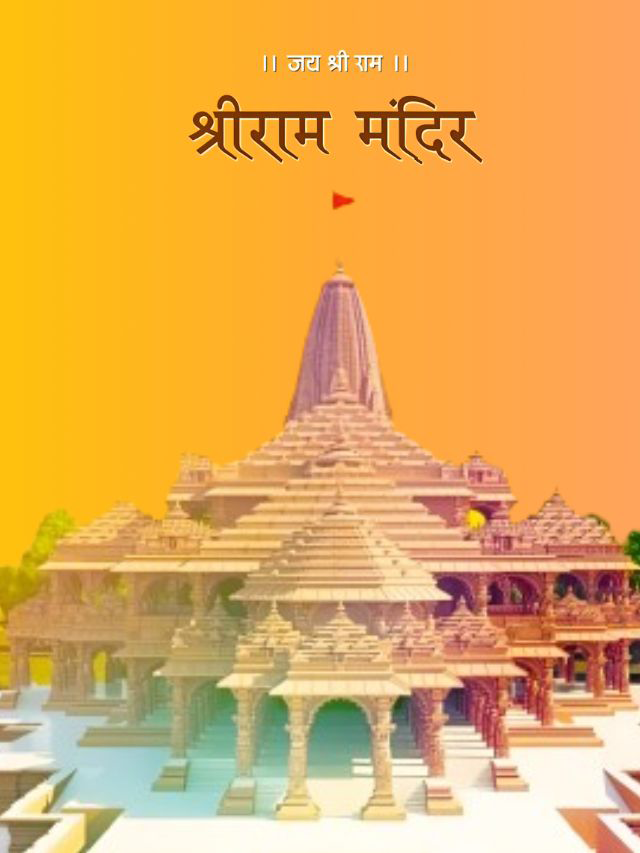
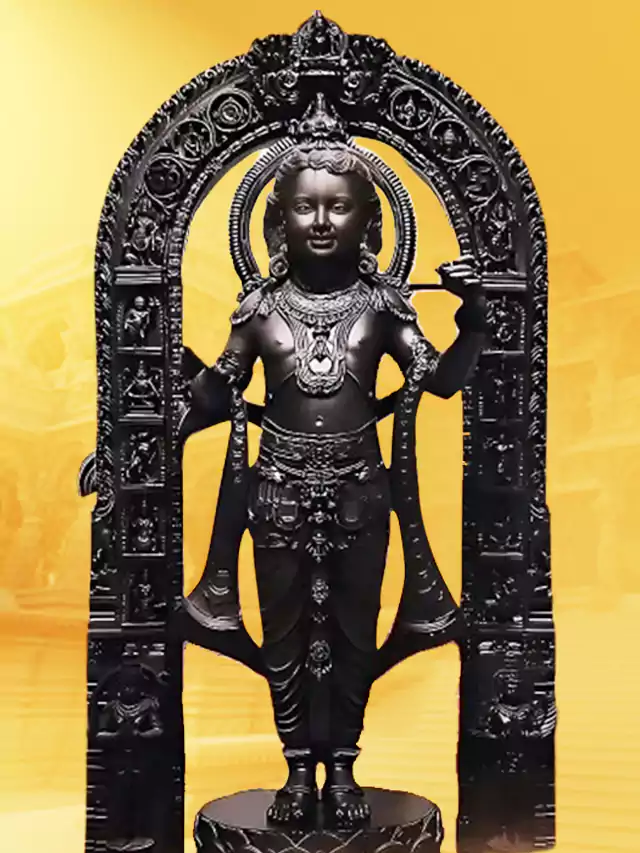





Quiet interesting and knowledgeable 🤗🙏🏻jai shree Ram🙏🏻
Great blog! Loved the content.😍
Jai shree Ram♥️
This post is very informative like this